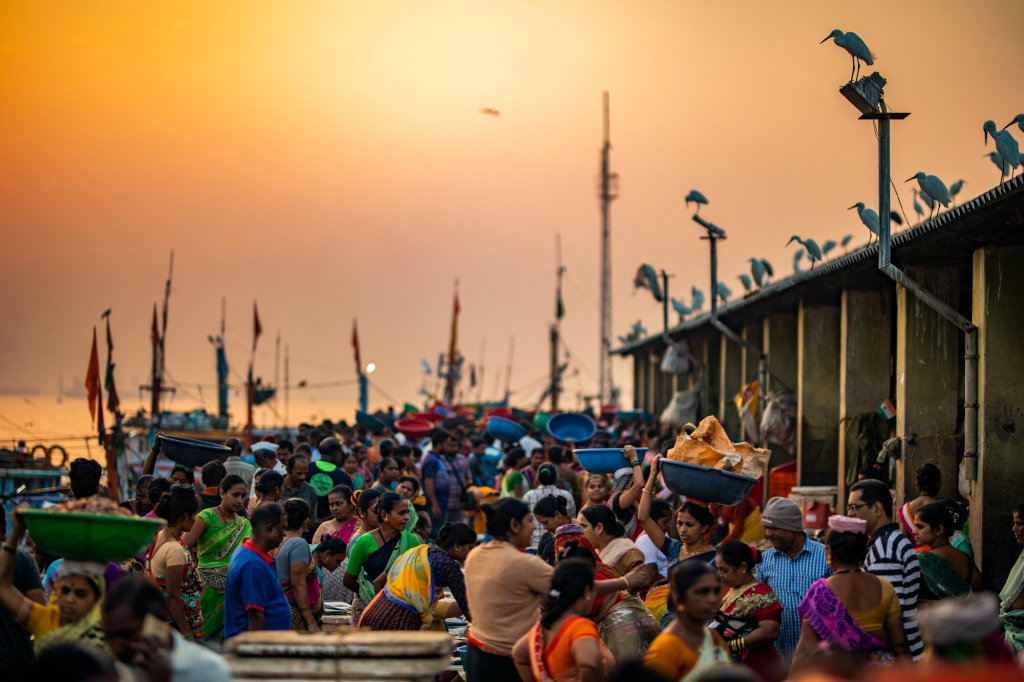Story by Nidhima Taneja
Named after Sir Albert Abdulla David Sassoon in 1875, lies one of the oldest docks of Mumbai. Amidst the pristine streets of South Mumbai, Sassoon Docks is not hard to locate. One could walk straight from the Regal Cinema with their eyes closed and still be able to make it to the dock in one piece, owing to the overwhelming stench of the fish. Initially set for cotton trade, the dock is known for its fish now.
Segregated on the basis of the nature of business, Sassoon Docks has an old and a new dock. While the old dock deals with the local fish merchants, the new dock is a tad bit upscale. To put things in perspective, the two docks are as different as a domestic terminal is from an international one at the Mumbai airport!
With a capacity to host 700-800 boats, Sassoon Docks is one of the most overcrowded docks in the city. Although a fisherman must be from the Koli community (Maratha fishing community – the original inhabitants) to own a boat at the dock, most of the fishermen and merchants working at the dock are migrants. They buy the fish in bulk at a miniscule rate and set out to sell for much more in various markets across the city.

“Things have changed drastically over the course of the past few years,” says a fisherman Ganesh Nakhawa whose family was one of the initial owners of the first boats up at the dock. He explains, “In the last 30 years, the whole landscape of this place has transformed. As the economy opened up, more and more people saw the golden opportunity of fishing here.”

The old dock is visibly more crowded than the new dock. Hygiene and quality check are one of the clear distinctions between the two docks. The new dock deals with the export business of fish. Since the fish is to be supplied to far off places in bulk quantities, extra measures are taken for preservation. While in the old dock is a haven for local fish merchants. Even at five in the morning, one can witness an army of fishermen and merchants who have travelled from far and near to get the best buy. “Rise in demand for fish and big crowds to the dock has resulted in overfishing. They do not even let go the smaller fish, which are not really of any use to anyone. There are set guidelines issued by the government with regard to the optimum size for the fish but hardly anyone follows them,” explains Nakahawa.

The two species which are facing the brunt of it all are Pomfrets and Seer (Surmai) fish. Most of the restaurants in the city serve these two species on a regular basis hence the rise in the demand. Consequently, fishermen get everything they can. The sea is gradually running out of Pomfret and Seer because they are fished out way before they can grow fully. Hence, fish are getting smaller in size and endangered by each passing day.

Besides the demand and supply of the fish, another problem area is the hygiene and preservation of the fish. Unlike the new dock wherein the quality check methods are in place, the old dock has no such provision. In order to keep the fish fresh and last longer, they must be stored in ice. But unfortunately, the catch suffers at the hand of lack of awareness and poor standards.

Due to the disconnect between the policy makers and the fishermen on the ground, the marine life suffers. As the fish would grow endangered, the fishermen would go deeper into the main sea to find their catch. One could imagine how the marine life is turning into no less than a pawn at the hands of humans. Overexploitation could only last for a few days before we may have no fish to feast upon.

A deterred balance in the ecosystem is not good news for anyone, be it the living on the ground or in the sea. There are many fishermen like Nakahawa who are actively working to raise awareness and promote sustainable fishing. One can only hope that the generations to come are able to experience Sassoon Docks in its full glory and not just as a world heritage site.
